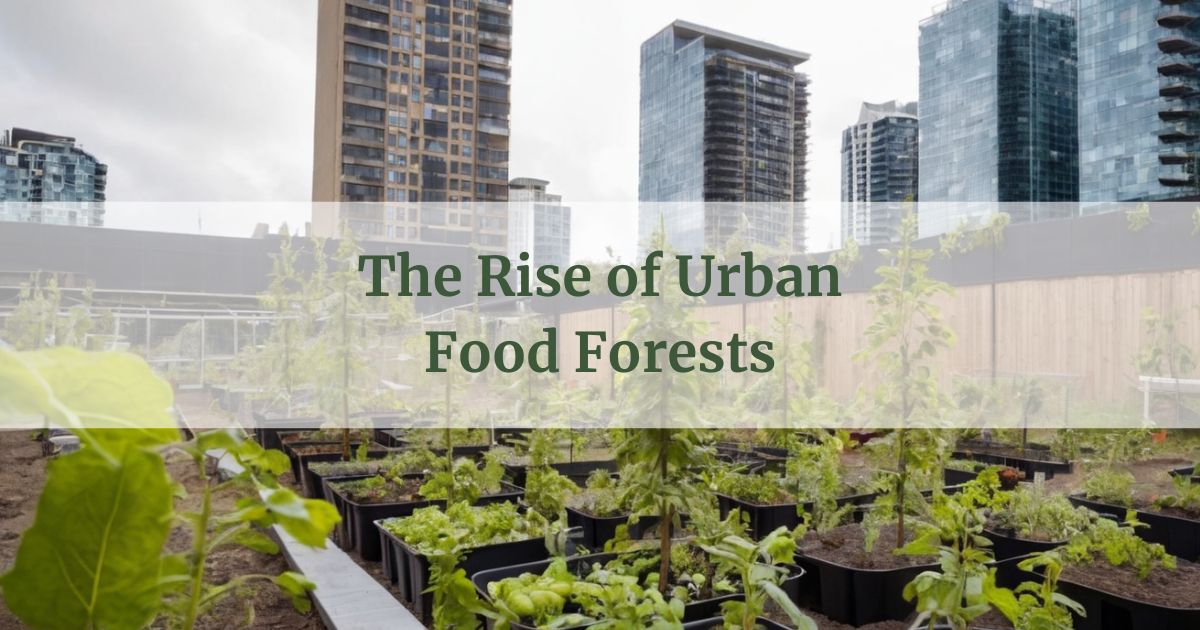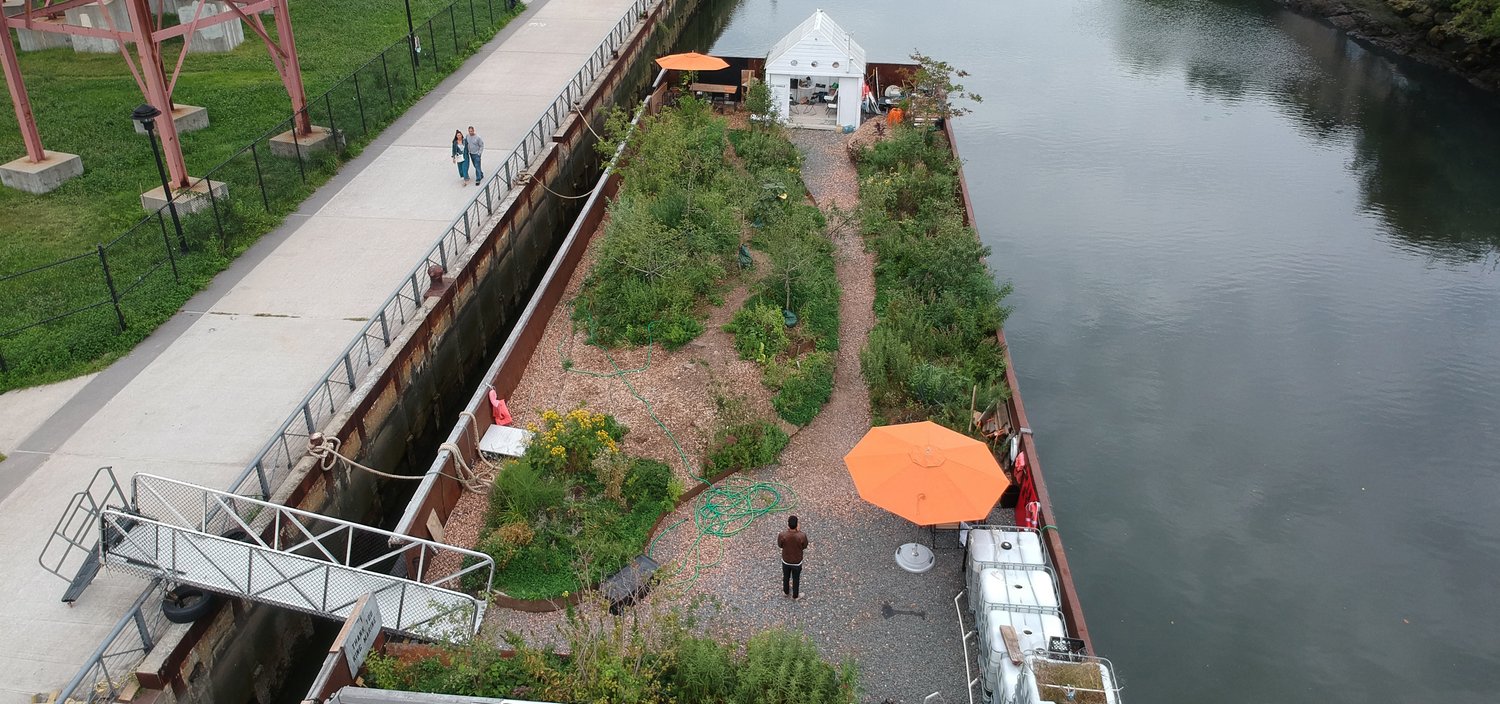
Urban food forests offer sustainable solutions for producing food in cities while benefiting communities. From abandoned lots to school yards, find out how to get one started in your neighborhood.
In this article
What is an Urban Food Forest?
An urban food forest is a permaculture garden designed to mimic natural forests. Layered with diverse edible plants, it provides fresh local food while strengthening connections to nature.
Key Features of Urban Food Forests:
- Diverse Ecosystems: Food forests are diverse ecosystems that imitate natural forests rather than monoculture agriculture.
- Community Participation: They encourage public and community involvement by transforming vacant city lots, parks, and community spaces into edible landscapes.
- Sustainability: By utilizing perennial species, food forests require less maintenance once established compared to annual vegetable cultivation.
- Ecosystem Regeneration: Harvesting from food forests is a byproduct of ecosystem regeneration, creating a self-sustaining system.
Unlike traditional farms that replant annually, food forests thrive on perennial abundance. These multi-layered ecosystems bear fruits year-round, offering a continuous bounty without the need for constant reseeding.
Rooted in permaculture ethics, food forests require minimal upkeep. By fostering diverse plant communities that attract pollinators (like bees) and natural allies, these systems reduce reliance on external inputs. Moreover, their rich soil life acts as an urban carbon sink, contributing to environmental health.
RELATED: Breaking the Green Ceiling: Indoor Gardening in Urban Spaces
More than just green spaces, urban food forests breathe life into idle lands, inviting the public to explore and connect with nature. Beyond providing sustenance, these communal hubs foster learning and social gatherings, offering workshops and volunteer opportunities to engage residents in the beauty of sustainable living.
How do Food Forests Benefit Communities?
By establishing food forests on vacant public parcels like schoolyards, parks or government-owned lots, unused urban spaces become productive. This maximizes available land resources within cities.
Education for All
Workshops and hands-on volunteer days teach organic growing techniques, inspiring more residents to cultivate sustainable home gardens. This knowledge transfer is vital for creating a more sustainable future.
Tackling Food Insecurity
Former food deserts, areas lacking healthy food options, are transformed when food forests deliver harvests free-for-all. No one need lack nutrition from lack of transportation or income.
Community Building
Public food forests encourage socializing and meeting neighbors over shared gardening tasks. Their open spaces activate idle lands as vibrant community hubs welcoming all.
Healthier People, Healthier Planet
Eating local seasonal foods reduces transportation emissions. Soil carbon sequestration in urban food forests also aids municipal climate action plans, promoting a healthier planet for all.
The Process to Starting a Food Forest in U.S.
- Identify potential sites like parks, schools or vacant public land in your city or neighborhood.
- Contact your local government to see if they’re open to transforming the space. Get written approval.
- Assess the location for sun exposure, soil quality with a test, and community connections nearby.
- Form a volunteer group by advertising public meetings and on social media. Build excitement.
- Design your food forest by mapping desired perennial layers and plant placements on graph paper.
- Apply for nonprofit status if needed to fundraise. Set up a small grants campaign on websites.
- Purchase bare root seedlings in bulk during winter dormancy for best prices.
- Plant trees first before assembling volunteers to install shrubs and groundcovers.
- Water regularly, apply mulch and hold volunteer work days monthly for weeding.
- Get certified for food safety and host seasonal harvest celebrations/workshops.
Case Studies
Swale (New York City, USA)

Swale is a floating food forest located in New York City, built atop a barge. It was created by artist Mary Mattingly to address the issue of food accessibility in the city, where as many as three million New Yorkers are living in areas with a shortage of fresh, healthy food. The barge was reclaimed from its previous use for hauling sand and transformed into a public artwork and edible landscape.
Sherret Food Forest (Portland, USA)

Sherrett Food Forest in Portland, USA, is a community-led urban farm spanning 0.68 acres near the Portland-Milwaukie border, initiated by students of Toby Hemenway, emphasizing sustainable food production and permaculture principles.
Engaging the local community through free events and initiatives focusing on earth care, fair share and people care (community engagement activities), the food forest serves as a model for transforming urban spaces into vibrant and sustainable food systems that benefit both residents and the environment.
Ashdod Community Food Forest (Ashdod, Israel)

The Ashdod Community Food Forest is a nature restoration site in Israel, transforming a degraded public park into a community food forest. By using permaculture principles, the Ashdod Community Food Forest promotes sustainable food production and enhances biodiversity, providing a model for urban food systems that benefit both people and the environment
La Food Forest (Plettenberg Bay, South Africa)
Located in Plettenberg Bay, South Africa, La Food Forest was created by Axel Will within an upmarket housing community. Will aims to source food locally for his boutique hotel guests and encourage other tourist sites to do the same through his urban food forest, reducing reliance on imported foods. The forest provides fresh produce while strengthening tourism in the region.
Brown Mill Urban Food Forest (Atlanta, USA)
Situated in an area formerly lacking food access (food desert) in Atlanta, the Brown Mill Urban Food Forest seeks to change that by 2022. Once established, it will produce nuts, fruits, vegetables, herbs and mushrooms for all nearby citizens within a half mile to enjoy. The space also hosts workshops and volunteer activities to teach sustainable growing practices.
Cargonomia (Budapest, Hungary)

Based in Budapest, Cargonomia connects sustainable food production to low-emission transport by using bike messengers to distribute locally grown foods. Through the efforts of volunteer caretakers, they transformed an degraded wetland into a productive urban food forest, restoring the land from its previous use as an illegal parking lot.
Picasso Food Forest (Parma Italy)

The Picasso Food Forest stands as a pioneering project in Parma, Italy, marking the inception of a public urban food forest that may be the first of its kind in the country. Commencing in December 2012, this initiative by Fruttorti di Parma draws inspiration from agro-ecology, agroforestry, and permaculture to create a sustainable human settlement that mirrors natural systems.
Get Started in Your City
Contact local orgs and propose food forest concepts for vacant spaces. Residents can transform schoolyards and parks into productive, sustainable gardens through volunteering and education. Nourish your community from within.
Here’s who you can contact:
- City/Municipality Parks & Recreation Departments: They manage public parks and green spaces that may have unused areas suitable for food forests. Contacting the head of the department can start a conversation.
- Local Environmental Non-Profits & Land Trusts: Organizations focused on greening communities and sustainable land use may be advocates for new food forests. Partnering with them provides resources.
- Public Works/Community Development: Departments overseeing unused public properties could see food forests as activating idle assets. Proposals may align with their goals.
- School Districts: Propose transforming empty school yards, ballfields on weekends/evenings to empower students with fresh food. Partner with PTA/Teachers for support.
- Library Systems: Beyond books, some libraries actively strengthen communities through programming on their land. A food forest complements this mission.
- County Extension Offices: Affiliated with land-grant universities, these offices educate citizens on agriculture and can advise on proposals, soil testing, plant selection.
- Neighborhood Groups/Community Gardens: Existing groups maintaining green spaces may want to scale up impact or partner on a larger new project.
So what are you waiting for? Get started!







